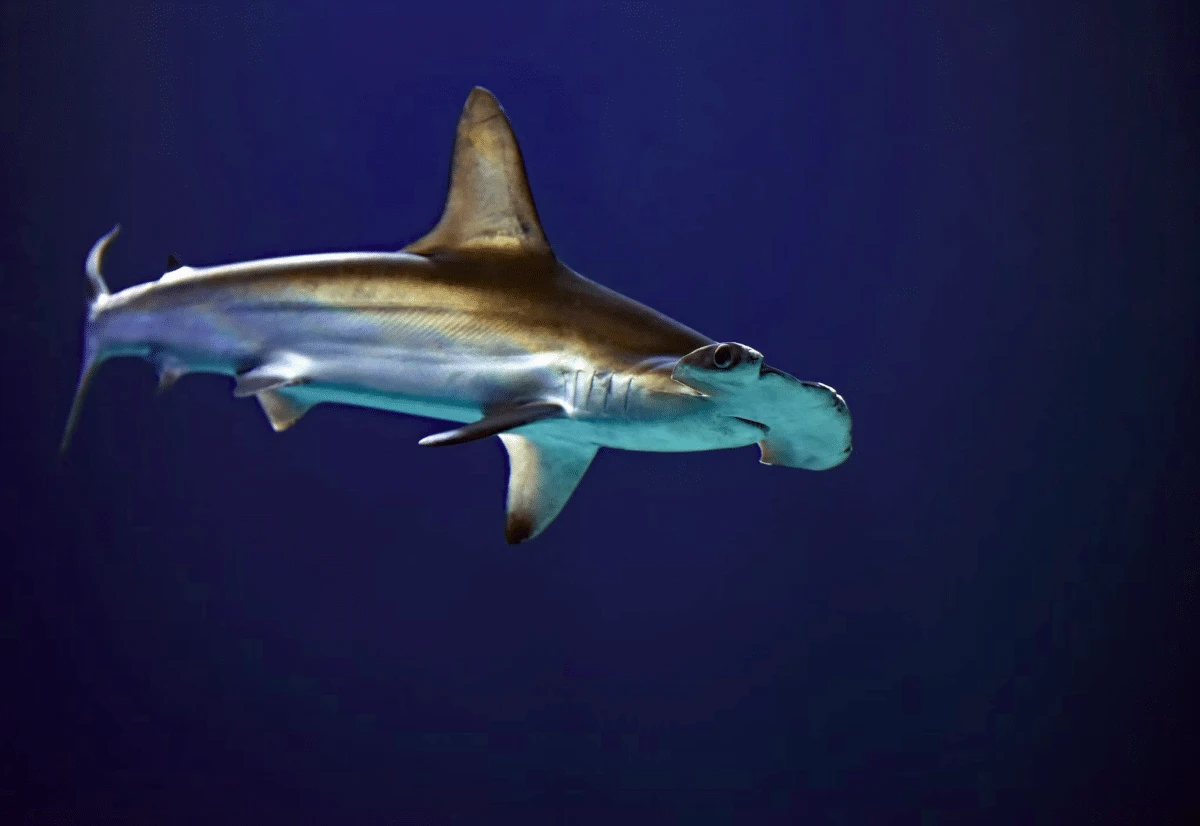Regarding marine life, sharks are quite possibly the most exciting subject – especially for kids! And among the various species of sharks, the great hammerhead shark (Sphyrna Mokarran) stands out for its unique appearance and impressive size.
These sharks are easily recognizable due to their distinctive hammer-shaped head, which can grow up to a third of their total body length. They’re apex predators of incredible size and mighty jaws residing in their ocean habitats, feeding on various prey such as stingrays, fish, and even other sharks.
Though they may look intimidating, these marine creatures do not generally pose a danger to people unless provoked (no matter what ‘Jaws’ may say!). They are much more at risk from humans than humans are from them because of activities such as overfishing and habitat destruction.
In recent years, the great hammerhead shark has become a focus of conservation efforts due to their declining populations in many areas.
This article will explore the world of the great hammerhead shark and delve into the fascinating encounter with the largest hammerhead shark ever seen.
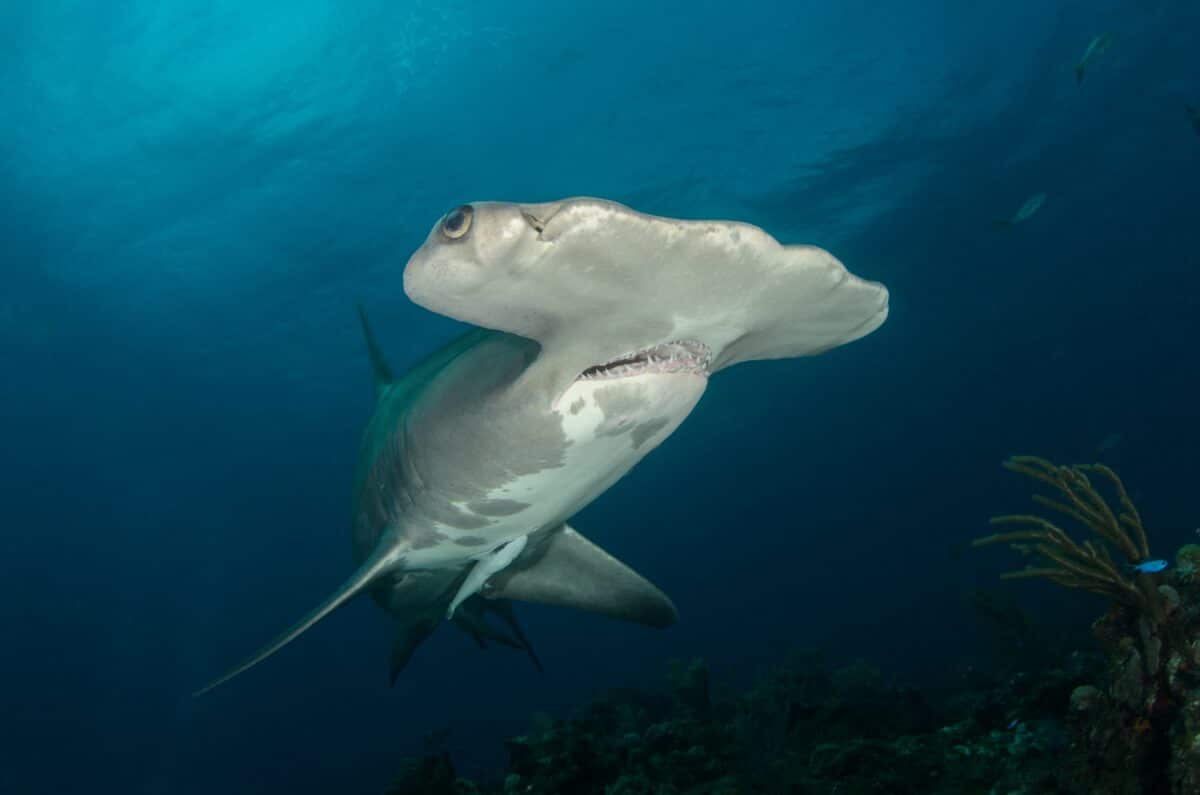
Want to jump ahead? Click below
The Great Hammerhead Shark
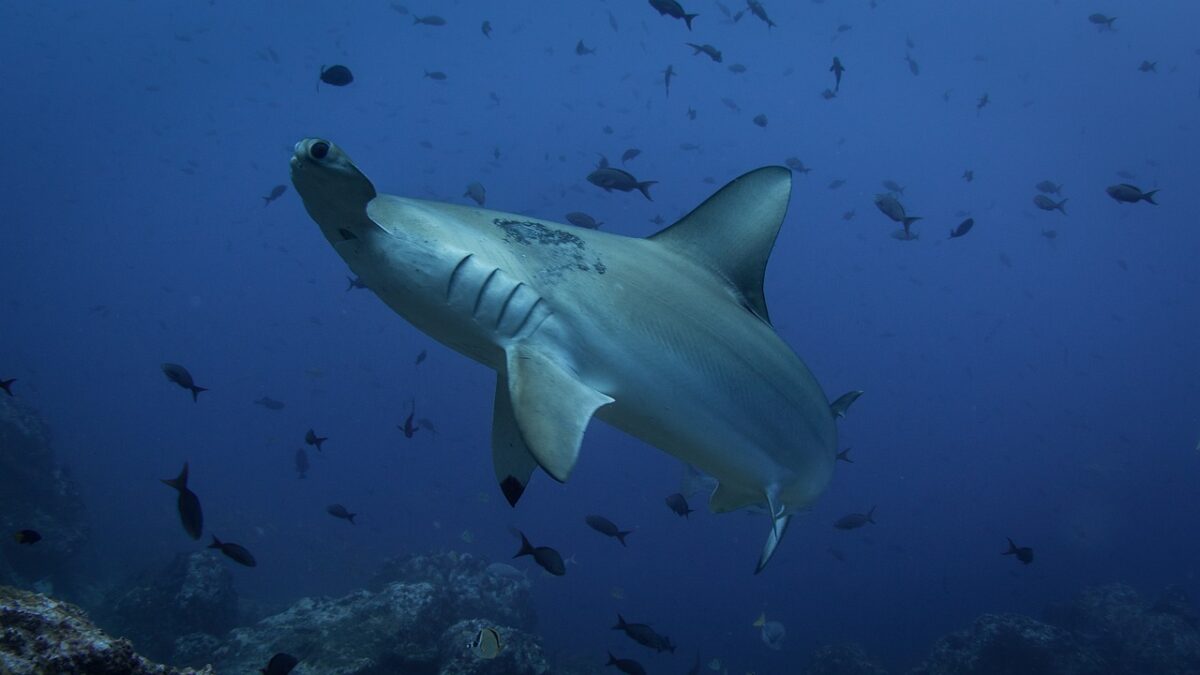
This particular animal is the biggest species of hammerhead shark, with adult individuals typically ranging from 3.5 to 6 meters (11 to 20 feet) in length and weighing up to 580 kilograms (1,280 pounds). They differ widely regarding these characteristics, especially since many sharks inhabit many waters – from tropical to sub-tropical and from the Indian to the Pacific oceans.
The most distinctive feature of the great hammerhead shark is its hammer-shaped head, called a cephalofoil. This unique shape provides the shark with several advantages. For example, the broad head allows the shark a wider, more expansive vision and helps the shark detect prey hiding in the sand or mud on the ocean floor.
Great hammerheads are generally solitary creatures, although they occasionally form small groups. They are also known for their long migrations, with some individuals traveling up to 1,000 kilometers (620 miles) in search of food or mates.
Diet
In terms of diet, great hammerheads are opportunistic feeders. Thus, their diet consists mainly of stingrays, but they will also eat fish, crustaceans, squid, and other sharks.
They have been observed using their cephalofoil to pin down and immobilize their prey before attacking with their powerful jaws.
As with many shark species, little is known about the reproductive biology of great hammerheads. However, these creatures are still believed to be what scientists call “oviparous”. This refers to females being able to lay eggs that hatch outside their bodies, unlike typical mammals.
Females may produce between 6 and 42 eggs per year, each containing an embryo that will hatch after 9 to 10 months. The young sharks are born fully formed and can swim and hunt independently.
Unfortunately, these incredible sharks face countless threats to their existence, including habitat destruction and overfishing. And these problems have caused declining populations of this magnificent species.
Now, the Hammerhead is listed as ‘endangered’ internationally by the ICUN. Despite this, efforts are underway to protect and conserve this remarkable species, essential in maintaining healthy marine ecosystems.
Check out: Howcome No Aquarium Has A Great White Shark?
Encounter with the Largest Hammerhead Shark
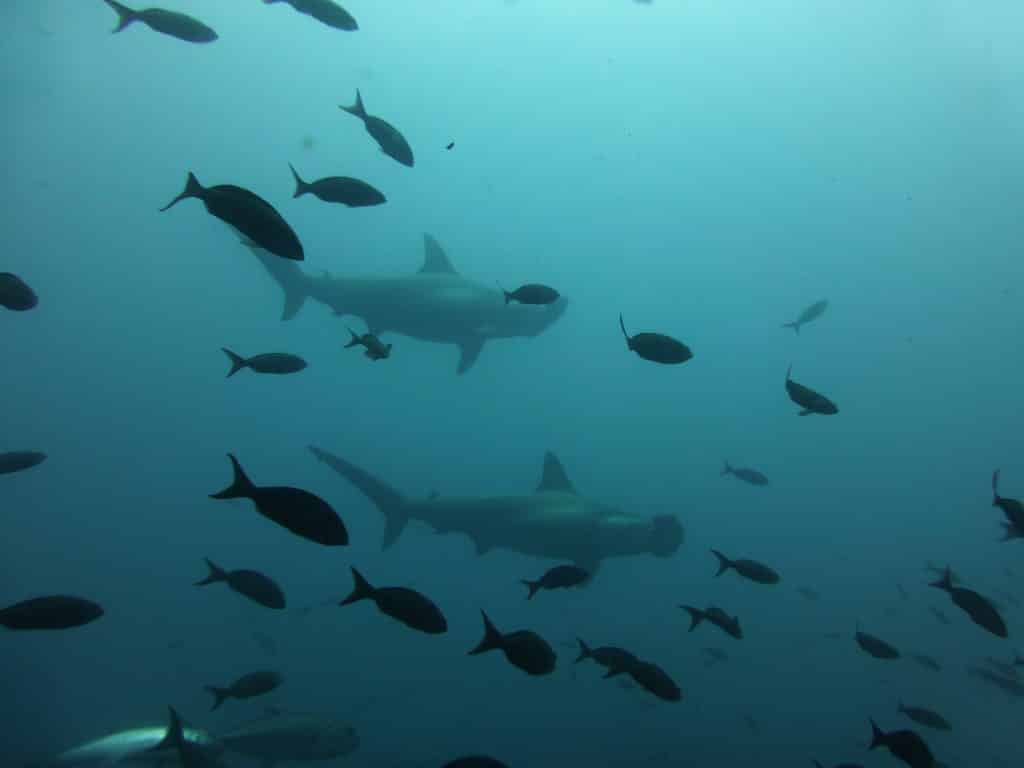
In 2016, a group of divers off the coast of Florida had a once-in-a-lifetime encounter. That is with what is believed to be the largest hammerhead shark ever seen. The shark is estimated to be over 6 meters (20 feet) long and weighs around 1,000 kilograms (2,200 pounds). It was spotted swimming near the divers, who were lucky enough to capture the encounter on camera.
The video footage shows the massive shark calmly swimming past the divers, its large cephalofoil and enormous body clearly visible. Moreover, the shark in question is believed to have been a female great hammerhead shark, which is typically larger than males.
While it’s not exactly confirmed (and most likely not possible) whether this was the largest hammerhead shark that ever existed, it is certainly one of the largest ever seen by humans. The encounter is a testament to these magnificent creatures’ awe-inspiring size and power.
It is important to note that while encounters with large sharks can be thrilling, it is crucial to treat these animals with respect and caution. Like all sharks, great hammerhead sharks help maintain healthy marine ecosystems, and their populations are already under threat due to human activities.
By minimizing our impact on their habitats and respecting their space when we encounter them, we can help protect and conserve these amazing animals for generations.
The Importance of Conservation and Protection
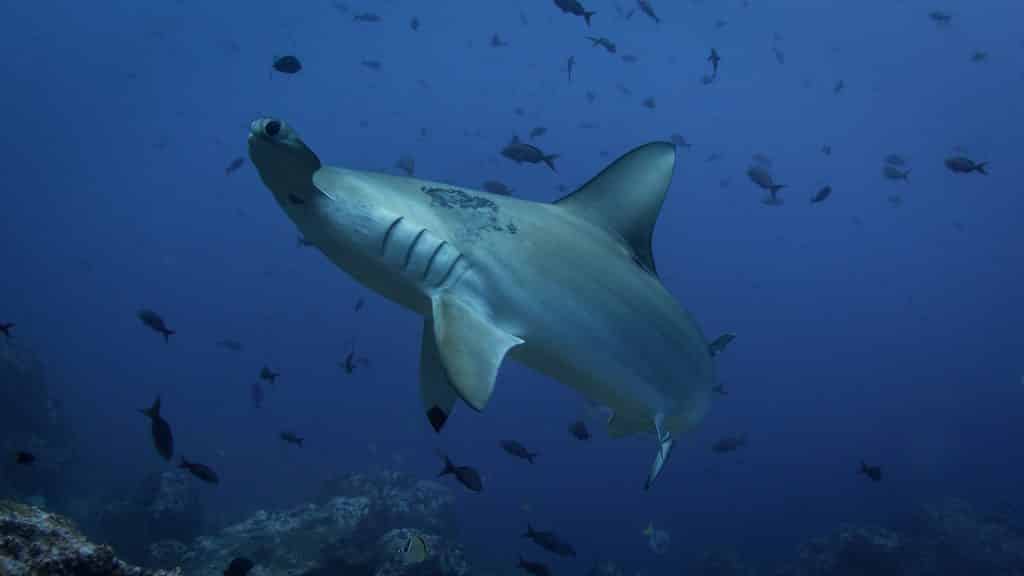
Great hammerhead sharks are a critically important species in marine ecosystems. They serve as top predators that keep smaller animal populations in balance. Recently, though, overfishing, habitat loss, and bycatch has ensured the rapid, unfortunate decline of shark. As well as fish populations in many warers.
In response to these threats, a number of conservation and protection measures have been put in place to help safeguard great hammerhead sharks and other shark species.
These include commercial and recreational fishing restrictions and the creation of marine protected areas where fishing is prohibited. As well as and efforts to reduce bycatch in commercial fisheries.
In addition to these efforts, there are several ways that individuals can support conservation. As well as help protect of great hammerhead sharks and other shark species. One essential method is to familiarize oneself with these animals. The threats they face so you can more easily combat them.
This can involve anything from spending time in aquariums or with marine experts (like marine biologists at your local university), reading articles, or even watching documentaries.
Another way to support conservation efforts is to reduce one’s environmental impact. This can include reducing single-use plastics, supporting sustainable fishing practices, and choosing seafood certified as sustainable.
Finally, individuals can also support conservation and protection efforts by reaching out to volunteer with or help fund (if possible) organizations that work to protect great hammerhead sharks and other marine species.
One such organization is Oceana, which works to protect and restore the world’s oceans through policy advocacy, scientific research, and public outreach.
If you support protecting and conserving these magnificent marine creatures, you can ensure they survive to see the next generation.
Interesting Facts
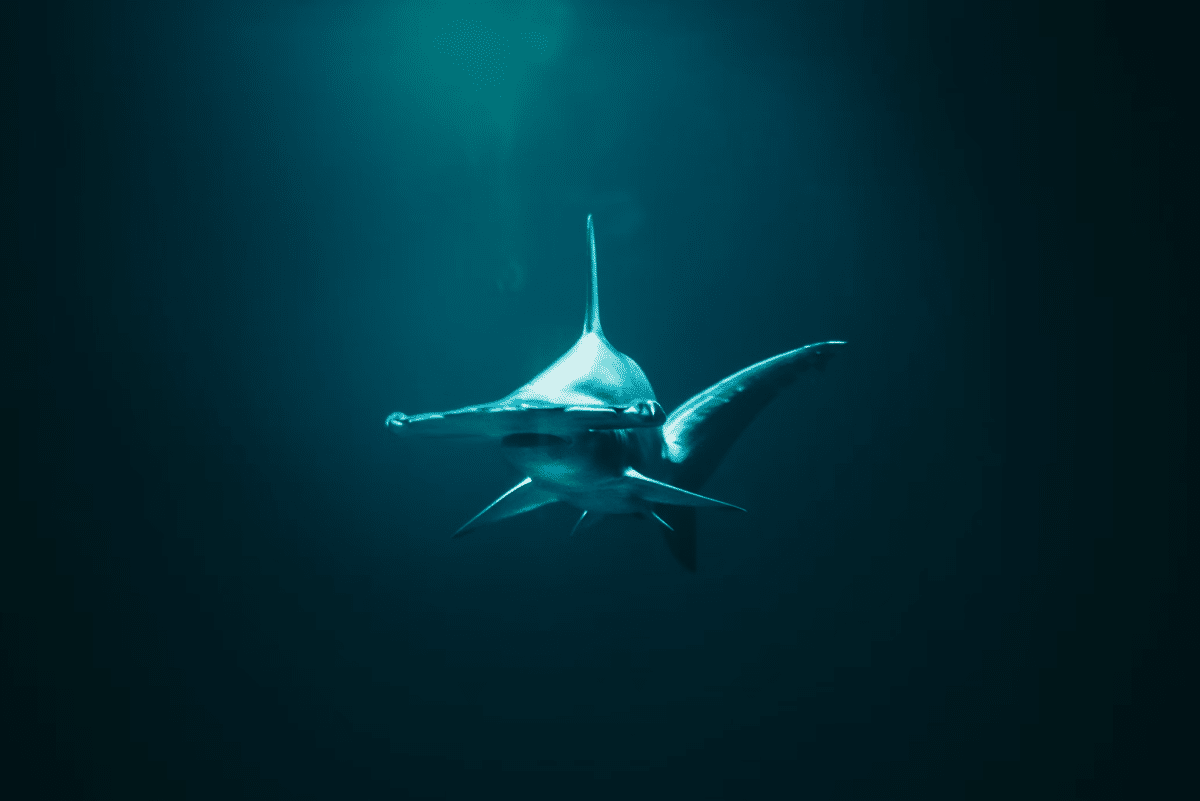
Hammerhead sharks are among the ocean’s most fascinating and unique animals. We may not know everything about them, but scientists’ existing collection of information on sharks is nothing to scoff at:
- Nine species of hammerhead sharks exist, ranging in size from the 3-foot-long bonnethead shark to the 20-foot-long great hammerhead shark.
- These marine creatures have an extraordinary olfactory sense. They can smell blood from miles away (now we know where the Jaws story came from!).
- Who knew Sharks were introverts? Rather than be a threat to humans, these creatures tend to be shy and avoid contact if possible.
- In some species, the mother will carry her eggs inside her body until they hatch. In others, the eggs are laid in a protective case called a mermaid’s purse.
Check out the National Geographic website on hammerhead sharks for more interesting facts.
Key Points
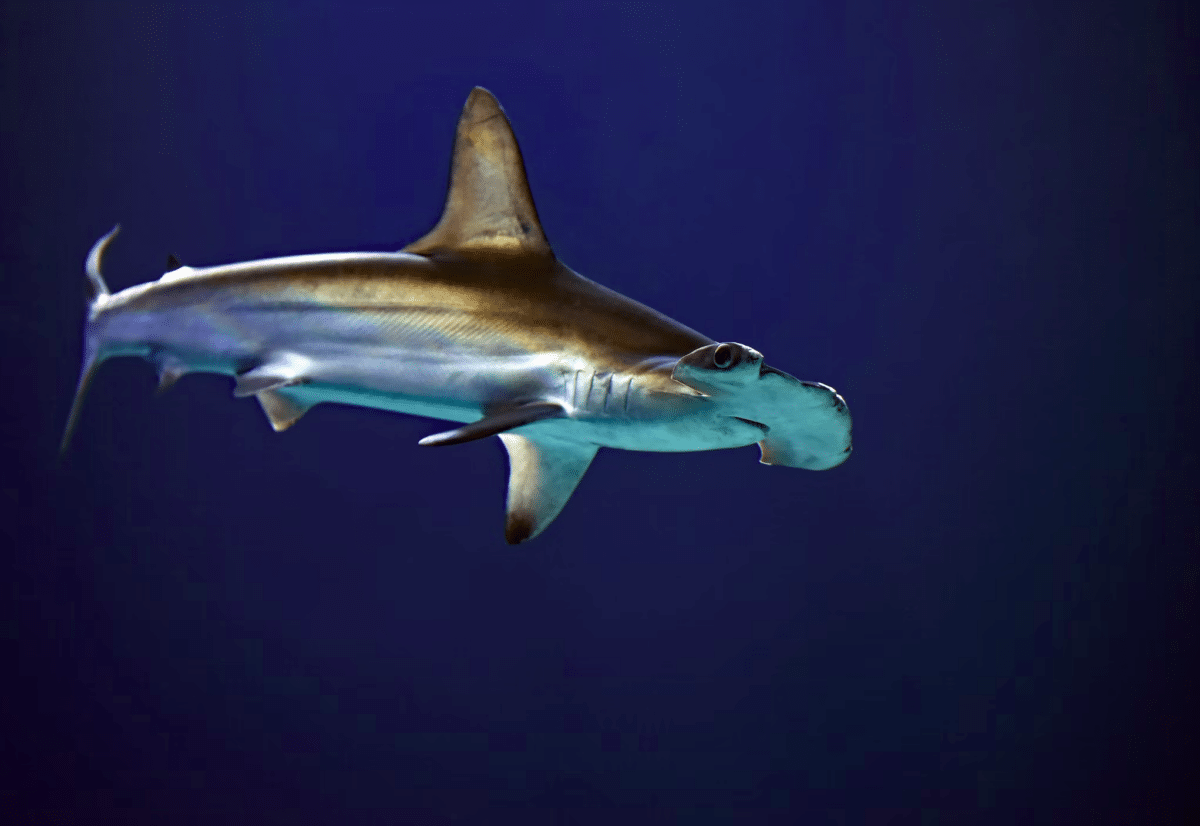
| Hammerhead sharks have unique head shapes and incredible sense of smell |
| The largest hammerhead shark ever recorded was over 20 feet long |
| Hammerhead sharks are endangered due to overfishing and habitat loss |
| Conservation efforts are critical to protecting hammerhead sharks |
| Encountering these fascinating creatures is a rare and unforgettable experience |
Wrapping Up with the Largest Hammerhead Shark Ever Seen
Encountering the giant hammerhead shark ever seen is a rare and unforgettable experience. It provides a unique window into the world of these fascinating creatures.
Despite their formidable appearance, hammerhead sharks are critical components of marine ecosystems. They serve as top predators that help to maintain a healthy balance of life in our oceans.
However, these magnificent animals face significant threats, including overfishing, bycatch in fisheries, and habitat loss. We must thus support conservation and protection efforts to safeguard hammerhead sharks and other shark species now more than ever.
Learn more about sharks and work at reducing your impact and adverse effects on the environment. Besides supporting other organizations that protect sharks, that is the best you can do to help the hammerhead thrive and survive.
The next time you find yourself on the sea, keep your eyes peeled for these incredible creatures. You never know when you might have the chance to encounter the largest hammerhead shark. As well as witness firsthand the beauty and power of these majestic animals.
Thanks for following along with me! I hope you enjoyed reading about a topic that really intrigues me.
Next up is ~
- Behold, the Most Massive Flock of Swarming Locusts Ever Seen
- Introducing the Smallest Species of Bat in the entire World
- Meet Lolong, the Largest Crocodile Ever
- Watch The Record-Breaking Size of the World’s Largest Pitbull Ever - April 16, 2024
- Watch Hippo Mother Chases Crocodiles To Protect Her Dead Child - April 15, 2024
- Watch Elephants Ask Rescuer To Play Piano - April 12, 2024

